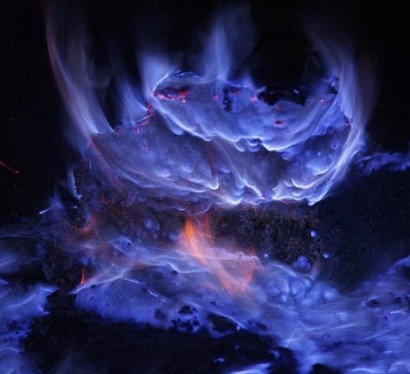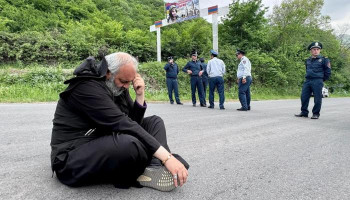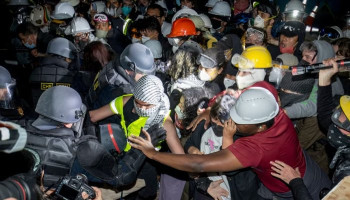Indonesian Volcano Erupts Electric-Blue Lava
 An Indonesian volcano has erupted what appears to be electric-blue lava flows, as photographed by Reuben Wu. Although surreal, this bright blue coloration is a result of nothing more than a tweak of chemistry. Volcanoes come in a variety of destructive flavors, both on Earth and on other planetary bodies in our Solar System. Shield volcanoes like Kilauea effusively erupt lava, fairly slow, over long periods of time. Tall, mountainous stratovolcanoes like Mount Fuji remain silent for many hundreds of years before unleashing their cataclysmic fury on the world. Volcanoes on Io, one of Jupiter’s innermost moons, produce spectacular eruption columns that reach heights of 500 kilometers (310 miles) that are literally out of this world. In any case, the lava produced tends to be an orangey-red color. Incredibly, a volcanic complex in Indonesia that goes by the name of Kawah Ijen bucks this trend: When it erupts, its lava burns an iridescent blue. The Ijen volcanic complex is a collection of stratovolcanoes in East Java, containing a large cauldron-shaped “caldera” that is approximately 22 kilometers (13.6 miles) across. The highest peak belongs to the volcano Gunung Merapi, which very appropriately, if unoriginally, translates as “mountain of fire.” As documented beautifully by Reuben Wu’s incredible photography, Kawah Ijen is almost the definition of unreal, particularly at night. The lava isn’t texturally or physically that different from the sort of lava that emerges from most stratovolcanoes: it’s fairly viscous, slow moving, and around 600-900°C (1112-1652°F). In fact, the lava itself is red, not blue. So what’s going on here? Lava lets out a vast amount of thermal energy, as you might imagine, enough in fact to cook a steak over several times. This emission of thermal radiation gives lava its red hue. In this case, however, the lava is actually burning something else: pockets of sulfur, which spew out of the volcanic crevices along with the molten rock. Burning elements is something we should all remember from our teenage years in chemistry class. When potassium is placed in the flame of a Bunsen burner, it burns and produces a lilac color. Burning calcium produces a yellowish-red flame, and copper burns green-blue. Sulfur? Yep, you’ve guessed it: when ignited, in this case by the searing heat of the lava itself, it burns an iridescent blue. The burning process reveals much about the energy of the chemical reaction that is occurring. A red coloration indicates a low quantity of energy is being released; green hues are representative of moderately energetic reactions. Blue flames are releasing the most energy, meaning that the blue flames of Kawah Ijen are incredibly energetic. The sulphurous pockets, released under high pressure, ignite at temperatures of 600°C (1,112°F), producing flames that reach up to 5 meters (16 feet) high, as the Nerdist reports. |





















